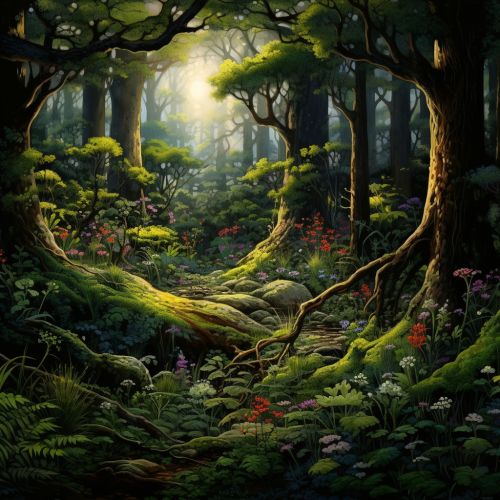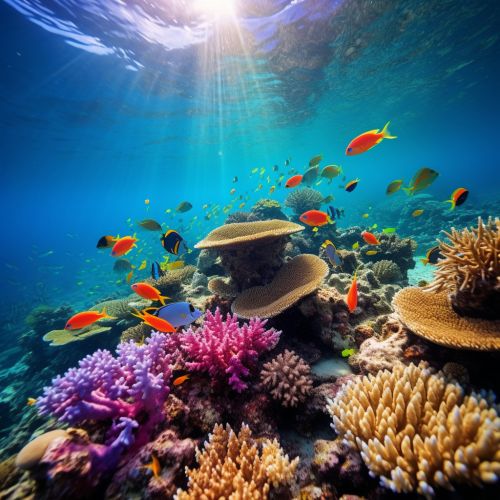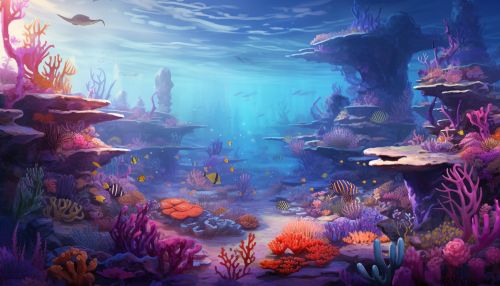Habitat
Introduction
A habitat is the natural environment in which an organism, species, or community lives. Habitats provide the vital resources needed for survival, including food, water, shelter, and space for breeding. The term "habitat" is derived from the Latin word "habitare", meaning "to inhabit". The concept of habitat is central to the field of ecology, as it is a key factor in determining the distribution and abundance of organisms.
Types of Habitats
There are numerous types of habitats, each with its unique characteristics and species. These can broadly be classified into terrestrial habitats, aquatic habitats, and artificial habitats.
Terrestrial Habitats
Terrestrial habitats are those found on land. They include forests, grasslands, deserts, and tundra, among others.


Forests
Forests are habitats characterized by a high density of trees. They are home to a diverse range of species, from large mammals like bears and deer to smaller creatures such as birds, insects, and fungi. Forests can further be classified into types such as rainforests, temperate forests, and boreal forests or taigas, based on their geographical location and climate.
Grasslands
Grasslands are habitats dominated by grasses, with few or no trees. They are typically found in regions with a semi-arid to semi-humid climate. Grasslands include savannas, prairies, and steppes. They support a variety of wildlife, including large herbivores like bison and antelope, and predators such as lions and wolves.
Deserts
Deserts are habitats characterized by low rainfall, resulting in sparse vegetation. Despite their harsh conditions, deserts support a range of specially adapted plant and animal species. These include cacti, desert shrubs, reptiles, birds, and small mammals.
Tundra
The tundra is a cold, treeless habitat found in the polar regions and on high mountains. Its harsh conditions limit the number of plant and animal species that can survive there. However, species such as lichens, mosses, reindeer, and arctic foxes have adapted to these extreme conditions.
Aquatic Habitats
Aquatic habitats are those found in water bodies. They include freshwater habitats like rivers, lakes, and wetlands, and marine habitats like oceans, seas, and coral reefs.


Freshwater Habitats
Freshwater habitats are found in inland water bodies. They include rivers, lakes, ponds, and wetlands. These habitats support a diverse range of species, from fish and amphibians to birds and mammals.
Marine Habitats
Marine habitats are found in the salty waters of the oceans and seas. They are home to a vast array of species, from microscopic plankton to the largest animal on Earth, the blue whale. Marine habitats can further be classified into coastal habitats, open ocean habitats, and deep-sea habitats.
Artificial Habitats
Artificial habitats are those created or significantly modified by human activity. They include urban areas, agricultural lands, and man-made water bodies. Despite their artificial nature, these habitats can support a range of wildlife, particularly adaptable species that can thrive in human-dominated landscapes.
Habitat Selection
Habitat selection refers to the process by which organisms choose the habitat in which they live. This is typically based on the availability of resources, the presence of predators or competitors, and the suitability of the physical conditions.
Habitat Conservation
Habitat conservation is the practice of protecting and preserving habitats in order to maintain biodiversity. This is crucial as habitat loss and degradation are among the leading causes of species extinction.
